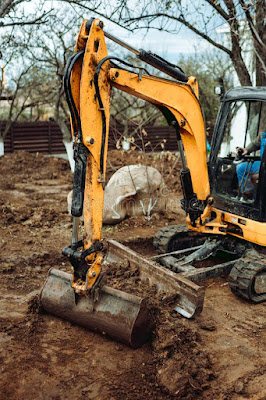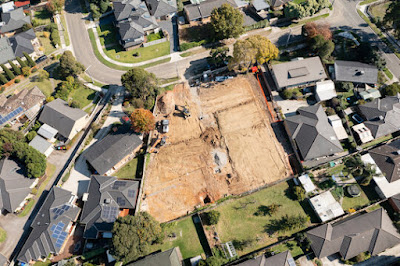Ways for the Stabilization Support Sustainable Land Management
A sustainable land management plan is essential for any agricultural operation. Proper land management can help conserve natural resources, improve soil health, and protect water quality. There are some steps that an operator can take to develop a sustainable land management plan, including assessing the site's current conditions, mapping out goals and objectives, and creating a plan of action. A sustainable land management plan is essential for any agricultural operation. Proper land management can help conserve natural resources, improve soil health, and protect water quality. There are several steps that an operator can take to develop a sustainable land management plan, including assessing the site's current conditions, mapping out goals and objectives, and creating a plan of action.
what are the Challenges in Sustainable Land Management?
Land management is a complex and ever-changing process. There are many challenges in sustainable land management, including:
-Overpopulation and sprawl: Many people live in areas that are not able to sustain their population or meet their needs, leading to unsustainable land use.
-Diversity and sustainability: Sustainable land management must account for the diverse needs of different species and ecosystems.
-Integrated pest management: Pest control requires an integrated approach that considers both environmental impact and economic considerations.
-Sustainable forestry: Sustainable forest practices must balance the need for timber with concerns over carbon emissions, water usage, and biodiversity.
-Land tenure issues: Land ownership can be a challenge in sustainable land management, as it can be difficult to ensure compliance with various regulations.
Types of Stabilization Support: Technical, Financial, Institutional, Human Resources
Stabilization support technical:
-Leveraging Geographic Information Systems (GIS) to better understand land use and land cover
-Developing land management plans that account for changes in climate, topography, and other natural factors
-Implementing agroforestry or other sustainable forest management practices on vulnerable lands to stabilize them
-Integrating environmental indicators into decision-making processes to improve sustainability
Financial:
-Providing financial assistance for landowners to develop and implement stabilization plans
-Financing the acquisition of new lands for conservation and restoration purposes through ecotourism or other sustainable development initiatives
Institutional:
-Creating a network of organizations that can provide support and resources to landowners when needed
Human Resources:
-Training landowners in the proper use of stabilization technologies and methods
Implications of Stabilization Support for Sustainable Land Management
Improved land management practices, increased food security, and reduced poverty. Stabilization support is an important part of sustainable land management. This support can help to prevent or reduce the impacts of natural disasters and other emergencies on land, while also helping to preserve and manage fragile ecosystems. In Auckland, residential land development companies are increasingly turning to stabilization support services to protect their investments and keep their communities safe.
Auckland is a city that is constantly growing, which means that it is responsible for a large portion of the region's population growth. As a result, housing developments are expanding quickly into previously undeveloped areas, which puts pressure on the environment and increases the risk of natural disasters.
To prevent or reduce these risks, many residential land development companies are turning to stabilization support services. These services help to stabilize new developments by creating safe zones around them that can withstand strong winds and rainstorms.
Evaluation of the Effectiveness of Different Types of Stabilization Support
Technical assistance, financial assistance, institutional support. The effectiveness of different types of stabilization support for residential land development companies is a topic of ongoing debate. Some suggest that artificial stabilization, such as that provided by stilt systems, is the most effective way to maintain stability and protect the land from erosion. Others argue that more natural methods, such as composting or planting native trees and shrubs, are better because they are more sustainable. Yet others assert that neither artificial stabilization nor more natural methods are necessarily better than the other and that it ultimately depends on the specific circumstances of each project. For example, artificial stabilization may be necessary for areas with high winds or heavy rains, while more natural methods might be preferable in areas with sandy soils or steep slopes. Ultimately, the effectiveness of different types of stabilization support will likely depend on the specifics of each case.
Ways for the Stabilization Support Sustainable Land Management
There are many ways in which the stabilization support of sustainable land management can be achieved. The following are a few examples.
-Funding: Funding is necessary for the implementation of any sustainable land management program, including those that use stabilization support. Grants and contracts can help to cover the costs associated with implementing such a program, while also encouraging innovation.
-Training and education: Trained personnel are essential for successful stabilization support of sustainable land management practices. Education programs can provide the necessary skills for individuals working in this field, as well as promote public awareness of these practices.
-Tools and technologies: Tools and technologies play an important role in facilitating stabilization support of sustainable land management practices. They can be used to measure progress, track changes over time, and make recommendations for future action.
1. Achieving sustainable land management requires the cooperation of multiple stakeholders. stabilization support can play an important role in helping to achieve this goal.
2. There are several ways in which stabilization support can be used to help improve sustainable land management practices.
3. It is important to select the right type of stabilization support for a given situation.
4. Properly implemented stabilization support can have a positive impact on both the environment and the economy.
5. Stabilization support is not a magic bullet, but it can play an important role in achieving sustainable land management goals.
6. There are some resources available to help practitioners implement stabilization support effectively.
Conclusion
In conclusion, there are some ways that stabilization supports sustainable land management. The most basic way is through education, which can help farmers and landowners understand the importance of land conservation and sustainable farming practices. Additionally, stabilization programs can provide financial and technical assistance to help farmers adopt these practices. Finally, stabilization also supports the implementation of land governance regimes that protect land rights and promote sustainable land management practices.




Comments
Post a Comment